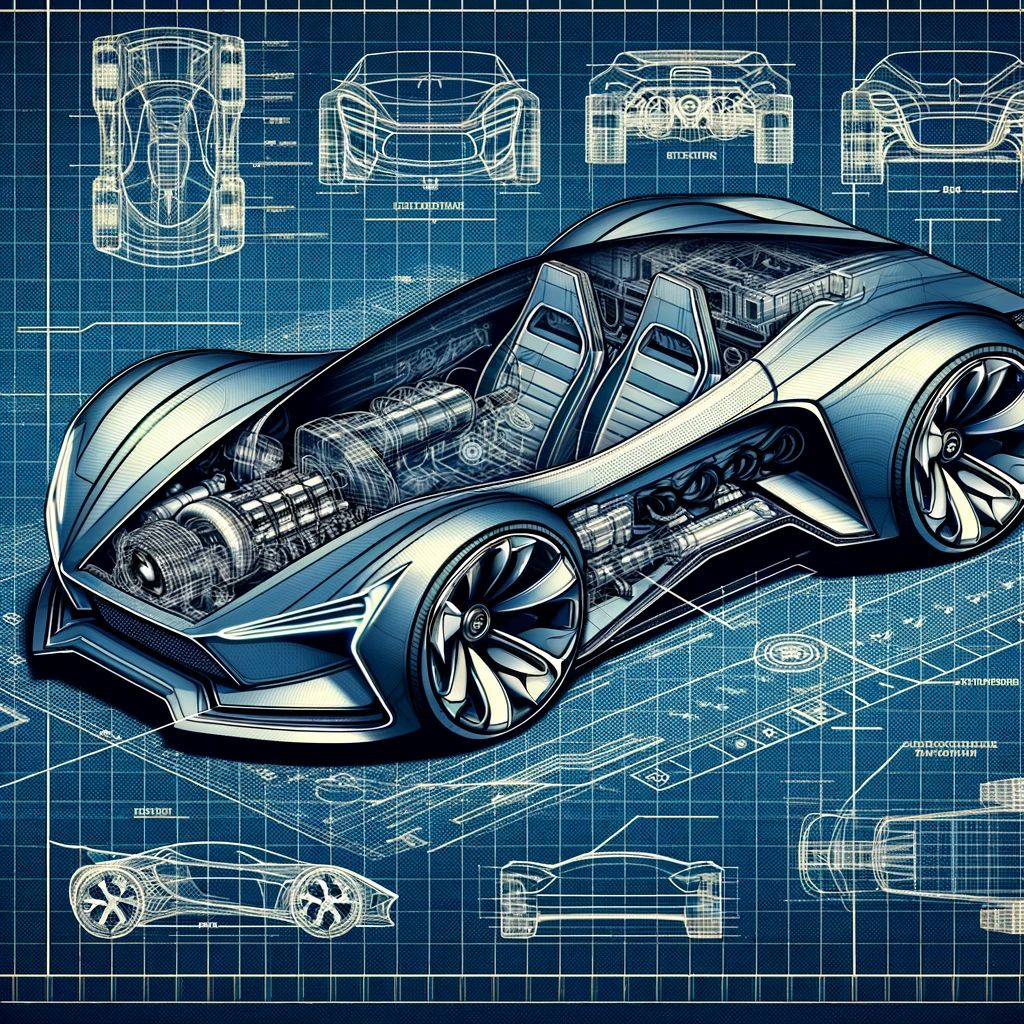
Creating a complete car design using AI involves several steps, utilizing different AI tools for concept generation, blueprint creation, and 3D modeling. Here’s a step-by-step explanation:
1. Conceptualizing the Car Design
- Use AI image generators like DALL·E, Midjourney, or Stable Diffusion to generate initial design ideas.
- Provide detailed prompts describing the car’s shape, style (e.g., sports car, SUV, futuristic electric car), and special features.
- Generate multiple images and refine them by iterating based on preferences.
2. Creating the Car Blueprint
- Use AI-powered CAD software like Autodesk Fusion 360, SolidWorks, or Blender with AI-assisted design tools.
- Convert concept art into 2D blueprints (top, front, side, and back views).
- AI tools like Dream3D or Kaedim can help transform sketches into structured blueprints.
3. Generating a 3D Model with AI
- Use AI-based 3D modeling tools like NVIDIA Omniverse, Gravity Sketch, or Runway ML to create a 3D model from blueprints.
- AI can automate surface smoothing, aerodynamics, and structure optimization.
- Import the design into Blender, Maya, or Unreal Engine for further refinement.
4. Structural and Aerodynamic Analysis
- Use AI simulation tools like Ansys, SimScale, or Altair to test aerodynamics and material strength.
- AI-powered generative design tools can suggest the best materials and chassis structure for weight and efficiency optimization.
5. Interior and UX Design with AI
- AI can help design the dashboard, seats, and infotainment system using human-centric design principles.
- AI tools like Adobe Firefly or Figma with AI plugins can assist in creating modern UI/UX for digital displays inside the car.
6. Virtual Prototyping and Testing
- AI-powered VR tools (e.g., Unreal Engine, Unity) allow designers to experience the car in a virtual environment before physical production.
- AI-driven simulations can test safety, fuel efficiency, and battery performance before production.
7. Finalizing and Preparing for Manufacturing
- AI-based CAM (Computer-Aided Manufacturing) tools like Siemens NX can generate manufacturing-ready designs.
- AI helps optimize materials, weight distribution, and energy efficiency for production.
- AI-driven robotic automation can assist in actual assembly line production.
Conclusion
By combining AI tools for concept generation, blueprint creation, 3D modeling, structural analysis, and virtual testing, you can design a complete car structure efficiently. Do you want help generating a specific car model or need assistance with AI tools?
No Responses